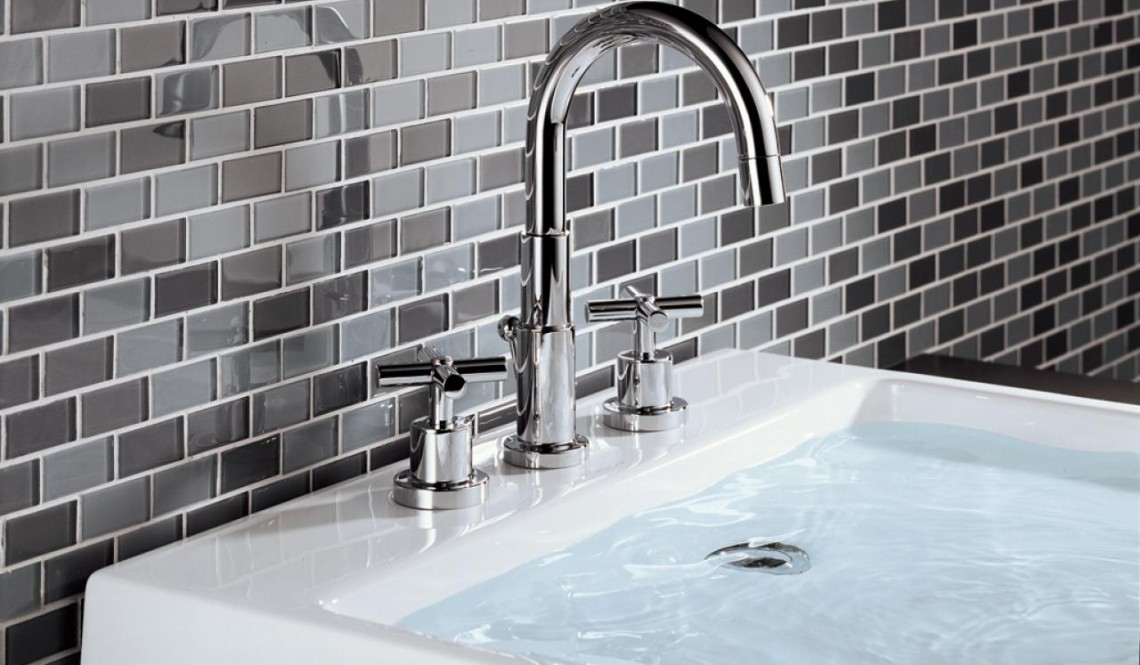
How to Pick Bathroom Faucets
In any bathroom remodel, the faucets are the accents of the room. Before choosing bathroom faucets, you’ll need to consider a few factors, such as whether you’re using an existing sink or buying a new one, where are the faucet opening. You’ll also need to consider which features you want, as well as how much faucet your budget will allow. Other considerations include the size of your bathroom and what sort of faucets are typically found in similar homes in your area.
When retrofitting a new faucet to an existing sink or buying a complete sink ensemble, be sure to match the type of faucet to the hole openings in your sink.
Single-hole faucets combine the spout and mixing handles into one unit that requires only one drilled sink hole. For retrofits, some models include a bottom plate that will cover existing three-hole openings. Single-hole faucets are ideal for smaller sinks, such as powder room baths. Their simplicity reflects modern sensibilities.
Center-set faucets fit standard three-hole sinks (with outer holes drilled 4 inches apart). They’ll have either a single lever or two handles mounted on a 6-inch plate. They’re ideal for most bathroom sinks.
Widespread mounts have three separate pieces: Two handles and the spout. The standard distance between the handles is at least 8 inches, and the three pieces tend to be larger than other types of bath faucets. Smaller versions, called minispreads, are designed for standard holes drilled 4 inches apart.
Wall mount faucets have gained popularity along with freestanding or vessel-type sinks that require longer spouts that extend well over the top of the bowl.
Faucet Finishes
fixture manufacturers have created more finish options to bring more products to market. Thanks to modern protective clear-coat sealers, even not-so-expensive faucets can boast about lifetime warranties for their finishes.
Some of these possibilities include polished chrome, brushed chrome, polished nickel, brushed nickel, hammered nickel, stainless steel, bronze, brushed bronze, oil-rubbed bronze, polished brass, black, white and decorative ceramic.
If the choices leave you overwhelmed, try these decision-making tips:
- Forget the metal and concentrate on the look. Visit a showroom where all the finishes are on display, and select the one you fall in love with.
- Coordinate all your finishes in each bathroom so that your hard surfaces—including towel bars, lighting fixtures and door hardware—have the same finish.
- Polished finishes are elegant but require constant upkeep to keep them looking sparkly
- Brushed finishes are better at hiding water spots and fingerprints, which is great if you have kids
Faucet Styles
Many manufacturers hire well-known designers to craft their most eye-catching models. Most of the design focus is on the spout, and recent introductions include spouts that deliver water through narrow tubes, down open chutes and through curves. Articulating-arm faucets have migrated from the kitchen into the bathroom.
Technology Trends
Sanitizing. If the kids like to play in puddles, you might be interested in an ozone-activated antibacterial bath faucet. The Cashido O3On Sanitizer injects a stream of ozone into the faucet water stream, killing germs. The company claims the ozone kills up to 99 percent of all bacteria while remaining perfectly safe for washing and drinking. They come with the technology built into the faucet or as retrofit kits that attach to the aerator.
Motion-activated. The hands-free faucet is gaining wider acceptance. Newer models, such as the Muirsis Pinnacle in satin nickel include motion-activated on/off, flow control and temperature adjustment with multiple pre-sets. These faucets require battery or AC power.
Self-powered motion activated. A refinement on motion activation, which requires battery or AC power, is a faucet that generates its own electricity. Using a tiny turbine that’s powered by water flow, faucets from Autotap create and store electricity used to power the infrared sensors that detect motion.
Laminar flow. If you like your water soft and silky check out laminar flows faucet technology. Standard aerators add air to the water stream to make the flow feel lighter—the bubbles make the water stream appear frothy white. The water flows in a clear, solid-looking stream that won’t splash when you’re washing your hands.
KGT Builders specializes in kitchen and bathroom remodeling and has many finished projects throughout Naples, Florida. See them now at www.KGTRemodeling.com/projects.
(suggestions like these can be found on HGTV.com)
